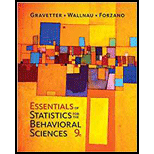
Concept explainers
In a classic study in the area of problem solving Katona (1940) compared the effectiveness of two methods of instruction. One group of participants was shown the exact, step-by-step procedure for solving a problem and was required to memorize the solution. Participants in a second group were encouraged to study the problem and find the solution on their own. They were given helpful hints and clues, but the exact solution was never explained. The study included the problem in the following figure showing a pattern of five squares made of match sticks. The problem is to change the pattern into exactly four squares by moving only three matches. (All matches must be used, none can be removed, and all the squares must be the same size.) After three weeks, both groups returned to be tested again. The two groups did equally well on the matchstick problem they had learned curlier. But when they were given new problems (similar to the matchstick problem), the memorization group had much lower scores than the group who explored and found the solution on their own. The following data demonstrate this result.

- a. Is there a significant difference in performance on new problems for these two groups? Use a two-tailed test with α = .05.
- b. Construct a 90% confidence
interval to estimate the size of the mean difference.
Want to see the full answer?
Check out a sample textbook solution
Chapter 10 Solutions
Essentials of Statistics for The Behavioral Sciences (MindTap Course List)
- On a 40-question final exam in history the problems are split between true/false questions and multiple-choice problems in the ratio of 3 to 5. Find the number of each type of problem.arrow_forwardTopic: George Polya’s Guidelines for Problem Solvingarrow_forwardAnswer the given problem and explain it step by step..arrow_forward
- Please read the problem carefully. Thank you!arrow_forwardA student arrive in a photocopy service. There is only one photocopy operator, and the time required for inquiry varies from student to student. The average arrival rate is 12 students per hour, and the average service rate is 20 students per hour. What is the average service time for this problem?arrow_forwardPlease help with part A,B,C,and D of the problem.arrow_forward
- I asked this question earlier but was still very confused on how to solve the problem. If you can please write out step by step and show exactly how to solve this problem it would help give me a more clear visual way on how to solve this. Thank you. QUESTION:arrow_forwardWhat will be the easiest solution for the following issue?arrow_forwardI need help with those given questions. The second image is the possible answers for those given problems. Thank you very much.arrow_forward
 Algebra for College StudentsAlgebraISBN:9781285195780Author:Jerome E. Kaufmann, Karen L. SchwittersPublisher:Cengage Learning
Algebra for College StudentsAlgebraISBN:9781285195780Author:Jerome E. Kaufmann, Karen L. SchwittersPublisher:Cengage Learning Intermediate AlgebraAlgebraISBN:9781285195728Author:Jerome E. Kaufmann, Karen L. SchwittersPublisher:Cengage Learning
Intermediate AlgebraAlgebraISBN:9781285195728Author:Jerome E. Kaufmann, Karen L. SchwittersPublisher:Cengage Learning

